Fall is coming. And whether you drive a boat or golf cart or operate a farm – chances are you’re getting ready to shut down equipment to prepare for the winter.
Now, with our storage guidelines, you can ensure a relaxing winter and a smooth spring startup.
But a few minor mistakes mean your batteries won’t start in the spring – and you might even have to replace them.
And if you think that’s the only problem, think again.
Worse yet, bad fall shutdowns can make your batteries unreliable. Farmers can lose valuable planting or harvesting time. Golfers might need to push their carts back or miss out on the season's first game. And boaters could be stranded miles from shore without electricity to power emergency electronics.
In this article, you’ll discover the keys to a safe and successful fall battery shutdown, including:
- Expert insights into why batteries suffer in cold weather
- Early warning signs of battery failure
- How to protect batteries during the winter
- Money-saving preventive measures that avoid early failure and expensive battery replacements
- Simple steps to rehabilitating batteries if they fail despite your best efforts
- And more
To start, let’s dig into why cold weather can be a battery’s worst enemy (and then what to do about it).
How Cold Weather Hurts Batteries
When temperatures drop below 32 (degrees F) / 0 (degrees C), a battery’s internal resistance increases and usable capacity decreases. The battery needs to be operated in a high state of charge to complete its duty cycle. Still, users may experience lower running times due to cooler operating temperatures. And battery charging times will be extended in cold operating environments. The combination of these cold weather operating challenges can lead to shorter battery life if users aren’t careful.
Additionally, when batteries are stored outside, or in freezing temperatures, liquids such as water within battery electrolytes inside the batteries can freeze, potentially leading to expansion, rupture, or damage of internal components. Other battery types may undergo chemical changes that render them unusable.
Early Warning Signs of Battery Failure
Look out for the early warning signs below to spot problems when they are easy and cheap to fix (or to budget for replacements in the spring):
- Your engine struggles to start or turns over slowly.
- Dimming lights on the center dashboard or other electronic components
- Warning messages or icons on your dashboard
- Chargers or Battery Monitoring Systems (BMS) sound alerts or flash indicator lights.
Proactive Care To Sidestep A Host Of Troubles Come Spring
Below are some of our favorite preventive measures:
- Regularly schedule inspections to identify early signs of failure when they’re cheap, simple, and easy to fix.
- Battery Management Systems monitor battery health in real-time and provide early warning about problems. Some BMS models even allow you to check battery health and ambient conditions over the net, so you can get instant status updates or push notifications on your cell phone or computer.
- Store batteries in a cool and dry place, ideally around 60°F (15°C). Your manufacturer’s manual should provide recommended storage temperature ranges.
- Place batteries on an insulated slab or rack, never directly on the ground. (Batteries placed on the ground will absorb temperature from below, even in rooms where the air temperature is higher.)
- Charge batteries before storing. Flooded lead-acid and absorbent glass mat (AGM) batteries should be stored fully charged and never drop below 70% State of Charge (SOC). Lithium-ion batteries do best at 40%-50% SOC. Always follow your manufacturer’s recommendations.
- Consider Trickle or “Maintenance” Charging, a method that tops off your battery to maintain proper charging levels and keep it healthy during the off-season.
What If Your Battery Still Fails During Spring Startup?
If the worst happens, you can try to resurrect batteries using the following methods:
- Always consult your manufacturer’s battery manual first. It will often include testing protocols or other recommendations for battery rehabilitation.
- When it works, jump-starting is a simple and effective technique for some battery discharge problems.
- For flooded lead-acid batteries, topping off with distilled water may help.
- Your local battery distributor or manufacturer may offer battery rehabilitation services using heavier-duty equipment and manufacturer-approved processes.
- If your batteries are too far gone, check with your manufacturer or battery dealer to recycle or dispose of them properly.
What’s Next?
Armed with the information in this blog post, you’re ready for a smooth fall shutdown that protects your batteries from the ravages of cold weather.
A bit of time now will save a lot of money and time later, ensuring your spring startup is as smooth, easy, and hassle-free as possible. And that means more time on the course, on the water, or in the field.
If you want an easier spring startup, check out our “5 Easy Steps to Get Your Batteries Ready for Spring Startup” guide now.












